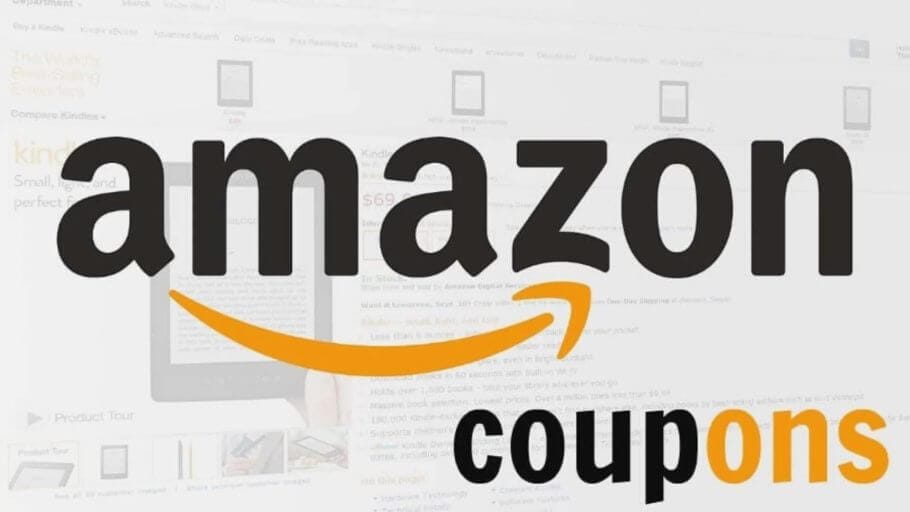For their successful, good life Information you really need: Government-funded publisher, awarded the Global Business Award as Publisher of the Year: Books, Shops, eCourses, data-driven AI-Services. Print and online publications as well as the latest technology go hand in hand - with over 20 years of experience, partners like this Federal Ministry of Education, customers like Samsung, DELL, Telekom or universities. behind it Simone Janson, German Top 10 blogger, referenced in ARD, FAZ, ZEIT, WELT, Wikipedia.
Disclosure & copyrights: With us you will find statements and interviews from and with celebrities and important people - including Hollywood stars, former heads of government and managers. The images were provided by the respective opinion contributor. Text originally from: “E-commerce strategies for manufacturing companies: Participating in growth with stationary retail structures” (2014), published by Springer Gabler Verlag, reprinted with the kind permission of the publisher.
OPINION! Prof. Dr. Gerrit Heinemann, Hochschule Niederrhein: Cooperative business models in e-commerce
By Markus Forst (More) • Last updated on October 15.12.2023, XNUMX • First published on 16.10.2014/XNUMX/XNUMX • So far 4578 readers, 1292 social media shares Likes & Reviews (5 / 5) • Read & write comments

Prof. Dr. Gerrit Heinemann heads the eWeb Research Center at the University Niederrhein teaches business administration, management and trade. The fourth and last part of the interview is about cooperative business models in e-commerce.
Heinemann studied business administration in Münster and received his doctorate as an academic Employees at the institute for Marketing at Prof. Dr. Dr. hc mult. Heribert Meffert. He started his non-university career as head of marketing at Douglas Holding AG before moving to Kaufhof Warenhaus AG, where he made up a trainee program and then became department store manager. As central managing director of Drospa Holding, he returned to the Douglas Group, then switched to the international management consultancy Droege and Comp. and ran the “Competence Center for Retail and Consumer Goods”. In 2005 Heinemann received a call to the Niederrhein University of Applied Sciences. He is the author of several bestselling specialist books on e-commerce and the deputy chairman of the supervisory board of buch.de internetstores AG.
- Cooperative e-commerce business models between retailers and manufacturers represent the only trade-friendly e-commerce strategy option for substitutable, manufacturing companies with a stationary trading structure, which is not at risk of temporarily losing massive turnover in brick-and-mortar retail.
- The books on the subject (advertising)
- What kind of e-commerce business model do you suggest to a manufacturer with a lower level of e-commerce maturity, dominated by a retail store?
- Discounts for your success (advertising)!
- In addition to cooperative e-commerce business models, are there other strategic options that a manufacturer can consider without incurring an incalculable risk of temporarily dropping massive sales declines through in-house distributions?
- If you summarize, which strategic options for action have proven to be a particularly successful e-commerce strategy for brand manufacturers with a predominantly stationary retail landscape?
- What risks do you see as an e-commerce strategy for brand manufacturers and how would you counter them?
- What tips and recommendations can you give to manufacturing companies with regard to their e-commerce strategy?
- Many manufacturers formulate a “growth strategy that is compatible with trade” as their goal in e-commerce. What types of businesses do you suggest to a manufacturer so that they can best participate in e-commerce growth with justifiable channel conflicts?
- E-commerce reduces the transaction costs of the customer or the customer. E-commerce can lower the transaction costs of the manufacturer. However, the prerequisites for this are rational processes and a scalable, cost-efficient IT landscape, which can withstand the dynamic. The systems of the IT landscape are therefore a critical success factor for manufacturers with regard to their e-commerce strategy.
- Which options are available to the IT landscape from your point of view? Where do you see the respective strengths and weaknesses of these options?
- Search engines determine the demand stream in e-commerce. The top placements of Google represent the 1a situation of the stationary trade on the Internet. Consequently, the topic of SEO and content quality for manufacturers is of particularly high relevance with regard to the successful positioning of their brand on the Internet. Achieving this goal becomes increasingly complex and costly.
- What content / SEO strategy do you recommend manufacturing companies? In your opinion, are there alternatives to this strategy?
- Stationary manufacturers often lack the sense of the e-commerce business. For the establishment of a successful e-commerce sales channel within the company, a specially created e-commerce organizational unit is essential.
- Pure players like Amazon can be both a curse and a blessing for a manufacturer. Such marketplaces are increasingly dominating the e-commerce landscape. The decision to supply Amazon directly as a manufacturer probably offers the highest sales opportunities in e-commerce. Likewise, the manufacturer enters into a certain relationship of dependency and thus heads towards the “point of no return”. So Amazon became the largest customer in Germany for many brand manufacturers. Dealing with pure players is one of the most important elements of an e-commerce strategy with regard to the online sales opportunities of a brand manufacturer.
- How do you recommend manufacturers to work with Amazon?
- Do you consider eBay or an eBay brand store as a suitable market place for manufacturers?
- The disruptive changes in consumers and media landscapes mean that the procurement of consumer goods and consumer goods is increasing through the Internet. While many manufacturers with a classically stationary trading structure notice this trend, they also fear the sanctions of the trade. Manufacturers who do not have a solution to this problem will inevitably lose market share.
- How can manufacturers counter the dilemma of the aforementioned thesis?
- Under what kind of organization do you recommend manufacturers to incorporate e-commerce?
- Nowadays, end consumers expect the entire product portfolio of a manufacturer to appear on their online branding and, in addition to a stationary retailer search, they also want to be able to conclude a purchase online with as little media discontinuity as possible.
- Which meaningful strategic options are available to the manufacturers with regard to online branding?
- The Internet provides for more perfect markets, mainly through a high price transparency. As a result, many online providers differentiate themselves primarily through the price. This is a major problem for premium manufacturers in particular.
- What methods do you recommend brand manufacturers to avoid price erosion?
- With respect to distribution strategies, omnipresence on all channels leads to increased price and margin pressure. To compensate for this, online offline pricing and product portfolio strategies are available. However, marketplaces provide for ever-increasing transparency so that some brand manufacturers ultimately remain the only step towards a selective distribution.
- Some brand manufacturers - B. adidas and Kettler - have recently set up a selective distribution system for brand management, in particular to counteract price erosion from marketplaces such as Amazon. The Federal Cartel Office is currently investigating the admissibility of the selective distribution of adidas. Many manufacturers are eagerly awaiting this precedent decision. What is the outcome of this and what is your option for smaller manufacturers who are not able to make temporary breakovers - the risk of introducing such a system?
- Top books on the subject
- Read text as PDF
- Advice on success, goal achievement or marketing
- Book eCourse on Demand
- Skate eBook as desired
Cooperative e-commerce business models between retailers and manufacturers represent the only trade-friendly e-commerce strategy option for substitutable, manufacturing companies with a stationary trading structure, which is not at risk of temporarily losing massive turnover in brick-and-mortar retail.
In my opinion, this primarily depends on the brand strength of a manufacturer. If the Brand strong enough, not listening to the trade can also be the least risky. Ultimately, there is also a risk of reaching a counterproductive compromise solution due to the excessive involvement of trade.
The subject of e-commerce demands uncompromising channel excellence. Wherever dealers have been integrated (e.g. in group models), the compromises mean that the channel excellence is thwarted and that Concept thereby becoming a stillbirth.
The books on the subject (advertising)
From my point of view it is Criticism the retailer is not the greatest risk, but rather the compromise solutions that a manufacturer enters into out of consideration for the trade than the much greater risk. Asking retailers can also be a big risk when in doubt, because when in doubt they don't know much about e-commerce.
What kind of e-commerce business model do you suggest to a manufacturer with a lower level of e-commerce maturity, dominated by a retail store?
Here I recommend working in stage models. The advantage in Industries with a low level of maturity is that the speed of development in e-commerce is much slower than in online-related sectors such as books, travel or electronics.
For this reason, a multi-functional solution is recommended for industries with low e-commerce maturity, which is the best way to prepare for the future.
Discounts for your success (advertising)!
In addition to cooperative e-commerce business models, are there other strategic options that a manufacturer can consider without incurring an incalculable risk of temporarily dropping massive sales declines through in-house distributions?
I have already answered this question. In my opinion, this depends primarily on the brand strength of a manufacturer.
If you summarize, which strategic options for action have proven to be a particularly successful e-commerce strategy for brand manufacturers with a predominantly stationary retail landscape?
With a view over the pond into the USA we can see on the example of Macy`s: Macy`s had to 2008 a dive - similar to Karstadt and Co. - experienced. Through a consistent mobilization of all investment funds, Macy's has succeeded with a radical solution to merge all sales channels and to build a no-line solution.
With a highly profitable growth is Macy`s shiny from the Crisis emerged and is now excellently positioned in all channels. Macy's has reinvented the department store. Such Strategy it is necessary to adapt to brand manufacturers in order to be special successfully to be able to be
What risks do you see as an e-commerce strategy for brand manufacturers and how would you counter them?
The biggest challenge today is making an investment decision in the necessary e-commerce IT landscape, which must reflect the necessary functionality of the next few years. Even though these investments are tiered, the biggest risk for brand owners is to put their money on the wrong horse.
Most manufacturers only have one shot at such investments. Macy's was shot but JC Penny was not, which is why this US retailer is undergoing restructuring. Several brand manufacturers had to be redeveloped due to the wrong e-commerce system decision.
It is elementary here that brand manufacturers choose the right service providers decideSo as not to end up with missized Solutions and long-term contracts can no longer break even.
What tips and recommendations can you give to manufacturing companies with regard to their e-commerce strategy?
In my view, getting the right ones is most important Competencies to bring into the house in the right dosage. Here should producing Companys make sure to bring in pure e-commerce specialists and tend to refrain from large consulting companies that also offer e-commerce consulting services, among other things.
Many manufacturers formulate a “growth strategy that is compatible with trade” as their goal in e-commerce. What types of businesses do you suggest to a manufacturer so that they can best participate in e-commerce growth with justifiable channel conflicts?
A combined, multi-optional solution is always recommended here in order to be “warmed up” for all conceivable variants that cannot be predicted today. The multi-optional solution should be compatible with dealers, but a manufacturer must also be able to quickly shift the lever to alternative sales channels.
Ultimately, the end customer decides which procurement channel he wants to choose. So if an end customer consciously decides to sell the product via the Online-Shop of the manufacturer, then he would not have bought the product in retail.
After all, in a cooperative e-commerce model, the merchant still participates in the online purchase by receiving a commission. The advantage of the manufacturers is that the degree of participation of the trade in a cooperative e-commerce model can be adapted at any time, since the manufacturer already carries out all processes himself.
From my point of view, such a "flexible response" model represents the lowest-risk form of an e-commerce model in order to avoid the insecure Future to be as well prepared as possible.
E-commerce reduces the transaction costs of the customer or the customer. E-commerce can lower the transaction costs of the manufacturer. However, the prerequisites for this are rational processes and a scalable, cost-efficient IT landscape, which can withstand the dynamic. The systems of the IT landscape are therefore a critical success factor for manufacturers with regard to their e-commerce strategy.
Right, with this thesis, I am absolutely d'accord.
Which options are available to the IT landscape from your point of view? Where do you see the respective strengths and weaknesses of these options?
Here I share it Opinions from Mr. Diekmann and am in constant contact with him regarding IT landscapes.
Search engines determine the demand stream in e-commerce. The top placements of Google represent the 1a situation of the stationary trade on the Internet. Consequently, the topic of SEO and content quality for manufacturers is of particularly high relevance with regard to the successful positioning of their brand on the Internet. Achieving this goal becomes increasingly complex and costly.
Correct. However, search engines are also increasingly being replaced by other models that should be kept in mind. Instead of search engines such as Google, portals such as Amazon are increasingly being used to search for products. In addition, it must be taken into account that customerswho know the brand specifically call up the manufacturer's website.
That's why this should be a flagship store nowadays. Research showed that the manufacturer site is used as frequently as search engines for product search.
This is not so expensive, but equally important, which is often neglected. Trademark makers always have an organic search beyond the search engine. The better and optimized the website of a manufacturer is designed and SEO-optimized, the better the search engine ranking is, without having to make SEM investments.
What content / SEO strategy do you recommend manufacturing companies? In your opinion, are there alternatives to this strategy?
Without being an SEO specialist, it is important that all content, whether it is for print media or that Internet was created, SEO-optimized.
Frequently printed flyers are archived electronically and placed on the Internet. It's worth the effort to generally use an SEO specialist to optimize the texts.
Stationary manufacturers often lack the sense of the e-commerce business. For the establishment of a successful e-commerce sales channel within the company, a specially created e-commerce organizational unit is essential.
I see it the same way. Although this also depends on the e-commerce maturity level of the company. In the highest evolutionary stage of digital maturity it is possible and also usefulto get back together.
Pure players like Amazon can be both a curse and a blessing for a manufacturer. Such marketplaces are increasingly dominating the e-commerce landscape. The decision to supply Amazon directly as a manufacturer probably offers the highest sales opportunities in e-commerce. Likewise, the manufacturer enters into a certain relationship of dependency and thus heads towards the “point of no return”. So Amazon became the largest customer in Germany for many brand manufacturers. Dealing with pure players is one of the most important elements of an e-commerce strategy with regard to the online sales opportunities of a brand manufacturer.
That's right, Amazon offers the biggest sales opportunities, but also the biggest risks to a de facto dependency that is already ubiquitous in numerous industries. I don't see pure players or marketplaces as the most important element of an e-commerce strategy.
However, I would say that the assessment of the correct handling of portals and marketplaces should be a very important element of any e-commerce strategy for a brand.
However, this goes beyond pure pure play concepts. Here, a brand manufacturer may consider with competitors, as an option to found their own marketplace. Currently, however, no manufacturer does so, as such a model requires a high level of e-commerce maturity.
How do you recommend manufacturers to work with Amazon?
Regarding Amazon, I recommend a controlled collaboration in which the manufacturer determines the intensity. It is important that manufacturers are aware of the dangers of Amazon and know how to deal with it.
Do you consider eBay or an eBay brand store as a suitable market place for manufacturers?
I consider eBay to be a suitable marketplace for brand manufacturers, as eBay is expanding strongly in the direction of brand shops and price erosion will not be the focus there. Although the effort on eBay too merchandise, compared to Amazon is higher, I see eBay brand shops as an absolutely recommendable platform for manufacturers and brand providers.
The disruptive changes in consumers and media landscapes mean that the procurement of consumer goods and consumer goods is increasing through the Internet. While many manufacturers with a classically stationary trading structure notice this trend, they also fear the sanctions of the trade. Manufacturers who do not have a solution to this problem will inevitably lose market share.
I see it the same way.
How can manufacturers counter the dilemma of the aforementioned thesis?
Here I recommend manufacturers with enough self-confidenceto take a proactive approach to e-commerce. In addition, this is also a test of the strength of a brand. In the e-commerce terrain, the manufacturer should be the Guide take over and support the trade. Under no circumstances should a manufacturer rely on the e-commerce expertise of its dealers.
With regard to possible sanctions for manufacturers' e-commerce strategies, experience has shown me that manufacturers' fears are often unjustified. It is important that the manufacturer communicates the e-commerce strategy openly to retailers. Here it is advisable for the manufacturer to provide the trade with advice-oriented Information to give to the e-commerce strategy.
Under what kind of organization do you recommend manufacturers to incorporate e-commerce?
E-commerce is and will remain a matter for the boss. In this respect, the department must report directly to the management. Some companies are already starting to create the board department e-commerce.
Nowadays, end consumers expect the entire product portfolio of a manufacturer to appear on their online branding and, in addition to a stationary retailer search, they also want to be able to conclude a purchase online with as little media discontinuity as possible.
Absolutely d'accord. To this thesis, I agree with you 100%.
Which meaningful strategic options are available to the manufacturers with regard to online branding?
A multifunctional solution is possible, which enables various, complex distribution forms from its own retailing to composite solutions with (wholesale) trading. It is important that such an option also takes account of the issue of internationality and allows connections to marketplaces.
Interactive platforms are also on the rise as additional sales channels that go far beyond the functionality of the previous marketplaces. Platforms like DaWanda and etsy.com are massively upgrading, so it can be assumed that in the future Alternatives to Amazon and eBay will exist.
This so-called reintermediation, ie the reinvention of intermediaries in the digital sector, will lead to the replacement of traditional intermediary traders and retailers. It is therefore important that manufacturers take this fact into account in their e-commerce strategy. From radical outsourcing solutions, Eg the outsourcing of an exclusive market shop to the trade, I advise.
Right, but the result Problems Rather, it is due to the fact that manufacturers set the wrong course at the beginning, which could have been prevented through more selective and controlled sales channels. However, it is difficult to compensate for this afterwards.
What methods do you recommend brand manufacturers to avoid price erosion?
Here I recommend a stronger one Control in the sales channel, which leads to more selective distribution models. There are also marketplaces or marketplace-like models that allow this control because they are closed.
The partnermodel from Zalando or also the eBay Markenshop are brand-compatible platform solutions, in which price congestion is not omnipresent. Amazon, on the other hand, uses the price aggressiveness of branded products selfishly, in order to create more frequency for self-assortments.
In the future, there will be much more sophisticated models in the field of marketplaces. I would advise brand-owners to let things happen before you enter into a too fast, rash partnership. Above all in terms of marketplaces, pricing strategies are irreversible.
With respect to distribution strategies, omnipresence on all channels leads to increased price and margin pressure. To compensate for this, online offline pricing and product portfolio strategies are available. However, marketplaces provide for ever-increasing transparency so that some brand manufacturers ultimately remain the only step towards a selective distribution.
True, however, the increased price and margin pressure is often self-inflicted because many manufacturers and their dealers lack the imagination to differentiate themselves over criteria other than price. In my view, some brands do not need to be differentiated at all.
Unfortunately, trade is often differentiated by the price and assumes the attitude that the price on the Internet must be lower than stationary. However, this does not have to be. I advise the retailer to highlight the advantages of online shopping.
Finally he has Customer This saves time due to lower delivery costs than if he had to drive into town. In the book segment, for example, Amazon has managed to relaunch the entire industry despite price fixing. Similar to Amazon, every bookseller can access wholesalers who can deliver directly. In this respect, it would have been possible for other retailers to set up a concept similar to Amazon's.
Some brand manufacturers - B. adidas and Kettler - have recently set up a selective distribution system for brand management, in particular to counteract price erosion from marketplaces such as Amazon. The Federal Cartel Office is currently investigating the admissibility of the selective distribution of adidas. Many manufacturers are eagerly awaiting this precedent decision. What is the outcome of this and what is your option for smaller manufacturers who are not able to make temporary breakovers - the risk of introducing such a system?
I think it's difficult to be such a selective one System to be withdrawn later. adidas, too, has let its distribution on marketplaces get out of hand for too long and is now trying to fix this. However, even a selective distribution system will not work per se, but only under certain conditions.
Many manufacturers still do not understand how the modern customer is ticking. The customer has the total market transparency through the mobile Internet, which leads him to carry out price comparisons. The modern customer wants to decide in the future whether he would like to ask for advice in the trade, and he is only willing to pay for it if he has actively decided. Therefore, it is my opinion that trade and also the manufacturers re-evaluate their business models.
The qualitative requirements for an optional consulting service that is remunerated in monetary terms will increase massively. Future business models should take the requirements of consumers into account by offering customers the products at a discount, without advice, and by having the optional advice remunerated in monetary terms. Even a selective sales model will only be able to prevail if it creates a real advantage for the customer. I don't see this in many selective sales models. "
Top books on the subject
Read text as PDF
Acquire this text as a PDF (only for own use without passing it on according to Terms and conditions): Please send us one after purchase eMail with the desired title supportberufebilder.de, we will then send the PDF to you immediately. You can also purchase text series.
4,99€Buy
Advice on success, goal achievement or marketing
You have Ask round to Career, Recruiting, personal development or increasing reach? Our AI consultant will help you for 5 euros a month – free for book buyers. We offer special ones for other topics IT services
5,00€ / per month Book
Book eCourse on Demand
Up to 30 lessons with 4 learning tasks each + final lesson as a PDF download. Please send us one after purchase eMail with the desired title supportberufebilder.de. Alternatively, we would be happy to put your course together for you or offer you a personal, regular one eMail-Course - all further information!
29,99€Buy
Skate eBook as desired
If our store does not offer you your desired topic: We will be happy to put together a book according to your wishes and deliver it in a format of yours Choice. Please sign us after purchase supportberufebilder.de
79,99€Buy
Here writes for you
 Markus Fost is the winner of the Vendor Award and works in business development as well as a consultant to the board at metabo. Markus Fost, BA cand. MBA, born in 1984, studied business administration at the HfWU Nürtingen-Geislingen. In his professional activity for well-known industrial companies and consulting companies, he was able to gain extensive experience in the e-commerce sector. Markus worked for Graupner GmbH & Co. KG for a total of nine years, most recently in 2009 - 2010 as Commercial Director / CFO. In 2009 he was given the Vendor Award Climber of the Year by Amazon.de as part of his work at Graupner GmbH and Co. KG. Markus Fost is currently working at the power tool manufacturer metabo in business development and as a consultant for the CEO and CFO. More information at www.all-ecommerce.de All texts by Markus Fost.
Markus Fost is the winner of the Vendor Award and works in business development as well as a consultant to the board at metabo. Markus Fost, BA cand. MBA, born in 1984, studied business administration at the HfWU Nürtingen-Geislingen. In his professional activity for well-known industrial companies and consulting companies, he was able to gain extensive experience in the e-commerce sector. Markus worked for Graupner GmbH & Co. KG for a total of nine years, most recently in 2009 - 2010 as Commercial Director / CFO. In 2009 he was given the Vendor Award Climber of the Year by Amazon.de as part of his work at Graupner GmbH and Co. KG. Markus Fost is currently working at the power tool manufacturer metabo in business development and as a consultant for the CEO and CFO. More information at www.all-ecommerce.de All texts by Markus Fost.
4 Responses to “OPINION! prof Dr. Gerrit Heinemann, Hochschule Niederrhein: Cooperative business models in e-commerce"
-
RT @SimoneJanson: Interview with Prof. Dr. Gerrit Heinemann, Niederrhein University of Applied Sciences - Price strategies in e-commerce - - Exciting contribution
-
[...] Interview with Prof. Dr. Gerrit Heinemann, Niederrhein University of Applied Sciences - 4/4: Cooperative business fashion ... [...]
-
RT @Berufebilder: Interview with Prof. Dr. Gerrit Heinemann, Hochschule Niederrhein - 4/4: Cooperative business models in e-commerce - http…
-
Interview with Prof. Dr. Gerrit Heinemann, Niederrhein University of Applied Sciences - 4/4: Cooperative business… #Profession #Education














![Commissioning headhunters and recruiters: companies must bear this in mind [+checklist] Commissioning headhunters and recruiters: companies must bear this in mind [+checklist]](https://e68zy2pxt2x.exactdn.com/wp-content/uploads/2022/headhunter-recruiting-auftrag.jpg?strip=all&lossy=1&ssl=1)




Post a Comment